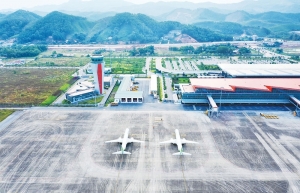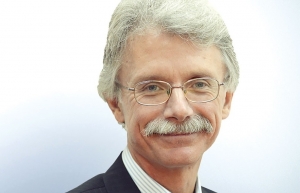Shifting methodologies in local aviation planning
At least 15 cities and provinces need to renovate, expand, or construct airports. Is this justifiable until 2030?
 |
| Dr. Nguyen Dinh Cung, former director of the Central Institute for Economic Management |
In reality, regions that need airport construction are not a new issue. We have advocated for a long time that there are too many municipal airports, despite the fact that financing is restricted. However, the majority of these concerns are justifiable. I believe Vietnam should not be confined to 28 airports by 2030 or 31 airports by 2050, but instead should have an open plan. We see airports that are overcrowded as well as ones that are vacant.
Can Tho city in the Mekong Delta region is an example. This province has a great deal of promise, but it is evident that improving the airport alone will not be sufficient; regional economic growth is also vital.
For instance, in the tourism sector, there are no offerings to boost tourism like Phu Quoc Island or other localities, where the synchronisation of development investment has not yet been observed while creating a supply of transport services, but at the same time, creating demand for local economic development through products and services of all types that require air transport.
In this approach, prescribing a spacing of 300km between airports is unfeasible. In reality, we already have well-functioning airports within 100km of each other.
This regulation should not become an impediment to industry. To analyse and add new airports, the Ministry of Transport has developed six primary criteria and 22 detailed criteria. In the present climate, however, it is not prudent to impose strict requirements that enterprises cannot meet. Even in the realm of technology, it has become obsolete.
Are you contemplating a local airport approach that takes regional connections into account?
Travel and interprovincial commerce need a rapid connection in the contemporary environment. Without this connectivity, the potential of some provinces cannot be appreciated or developed.
The northern mountainous province of Ha Giang is an example of a developing economy with a focus on tourism. Or, similar to Lai Chau, this northern province possesses untapped potential. Likewise for the central province of Quang Tri.
With improved connections, tourism has blossomed in Phu Quoc and it has become a popular tourist destination. The rule here is that supply generates demand, thus enhancing Phu Quoc’s economic potential. Consequently, we must respect this necessity.
Is there the prospect of investment disputes between major airport projects and small local airports if the policy outlook is altered?
We find no contradiction here. More international airports are needed in Vietnam. In principle, economies of scale exist but in reality a number of problems impede their implementation.
The airports in Hanoi and Ho Chi Minh City are now overcrowded and inadequately sized. The clearance demand is high, but would we prioritise upgrading and processing Hanoi’s airport or Ho Chi Minh City’s airport, Hue’s or Vinh’s first? Someone must handle this situation. This issue cannot be addressed immediately; it must be tackled in a decade.
Is it correct that the capital structure is also associated with a shift in policy?
Currently, finance is not a critical challenge. I do not consider the lack of investment funds for airports; rather, I consider the lack of awareness and planning. The government must devise a more adaptable method for capital mobilisation. To do this, developers/investors must downsize the airport in which they want to engage, transferring the project to the regions so that they may take care of their own capital development since airport development is based on local demands.
They will discover methods to recoup funds while also exploiting and taking advantage of the province and the surrounding area. Local officials will be more encouraged to devise a mechanism to attract capital investment for economic growth and airport development.
However, this does not imply that the government is inactive. The government must devise ways to stimulate private sector capital mobilisation for airports and local economic development investments. To achieve this, the government should revise its investment attraction policies, particularly the Law on Investment, which must be modified to accommodate local economic growth.
Therefore, attracting investment should be more adaptable. It might not be necessary to make it a law, but that would open the door for businesses and governments to use it as a way to make decisions.
 | Finding suitable models for small airports in Vietnam Michel Werson, chief economist and lead of Financial Advisory at NACO – a subsidiary of Royal HaskoningDHV – delves into the ins and outs of airport development. |
 | Utilising national advantages with crucial infrastructure Small airports and dual-use airports are expected to be valuable infrastructure fulcrums for many remote localities to attract investment and exploit the advantages of tourism, if selected and added to the plan and early investment implementation. |
 | Making the right choices for private airport expansion Vietnam’s airport development plan for 2030 is a hot issue, attracting much interest among private investors and cities and provinces. Tony Foster, managing partner at Freshfields Bruckhaus Deringer LLP, delves into future opportunities, possible risks, and lessons from other countries. |
What the stars mean:
★ Poor ★ ★ Promising ★★★ Good ★★★★ Very good ★★★★★ Exceptional
Related Contents
Latest News
More News
- EVN launches major power infrastructure projects nationwide (December 19, 2025 | 18:17)
- VAL inaugurates second production line to meet domestic animal feed demand (December 19, 2025 | 16:37)
- Sun Group pioneers urban tram system in Phu Quoc (December 19, 2025 | 15:00)
- Seven major projects launched to drive Hanoi’s next growth phase (December 19, 2025 | 14:00)
- Securing capital and efficiency for Vietnam’s 2026-2030 growth ambitions (December 17, 2025 | 10:00)
- Vietnam bucking trend in the global M&A landscape (December 16, 2025 | 14:20)
- HDS Summit spotlights Vietnam’s rising role in regional supply chains (December 16, 2025 | 08:00)
- Kolon signs $48 million airbag supply deal with Autoliv (December 15, 2025 | 18:14)
- National Assembly approves Vinh–Thanh Thuy expressway project (December 15, 2025 | 18:02)
- Quang Tri green-lights $1.59 billion LNG-fired power project (December 15, 2025 | 17:59)

 Tag:
Tag:





















 Mobile Version
Mobile Version